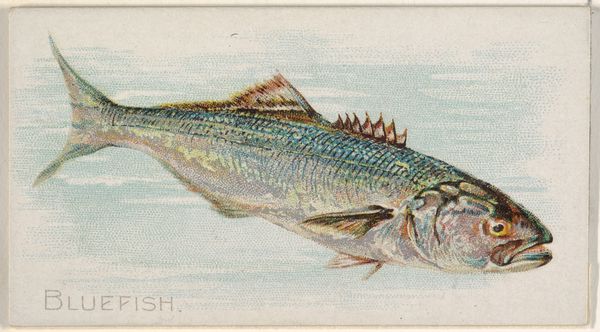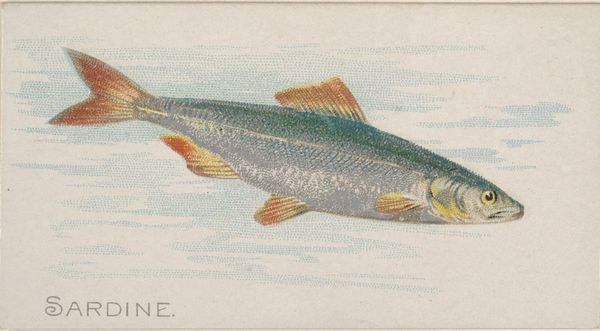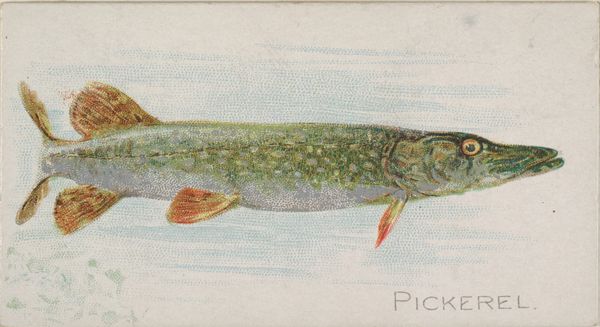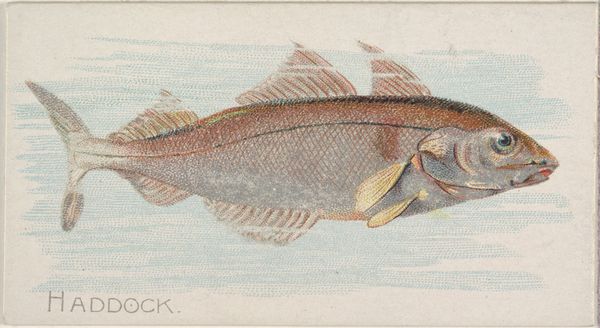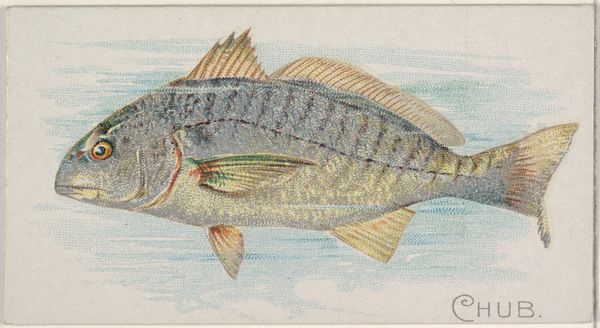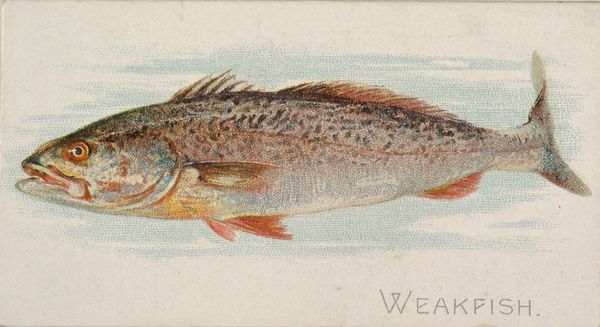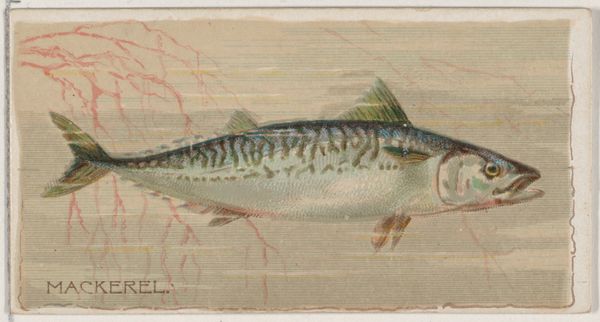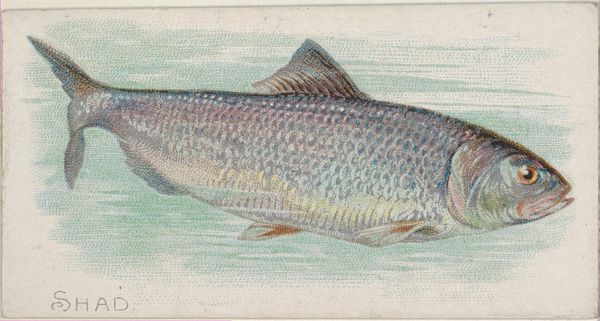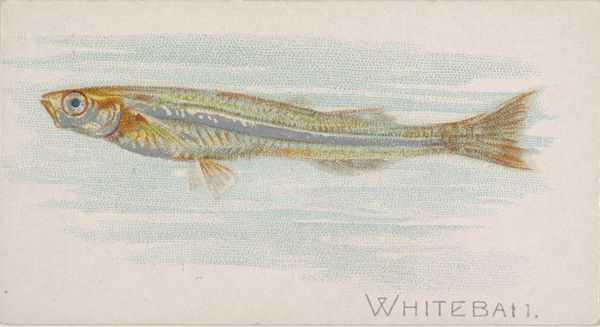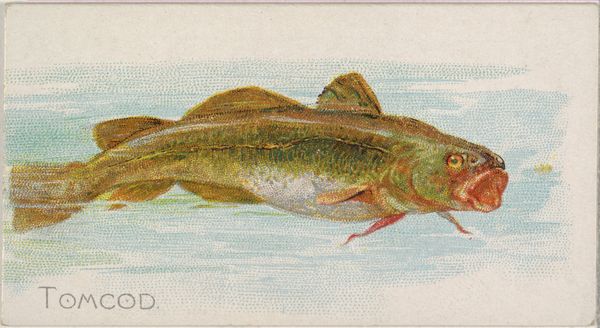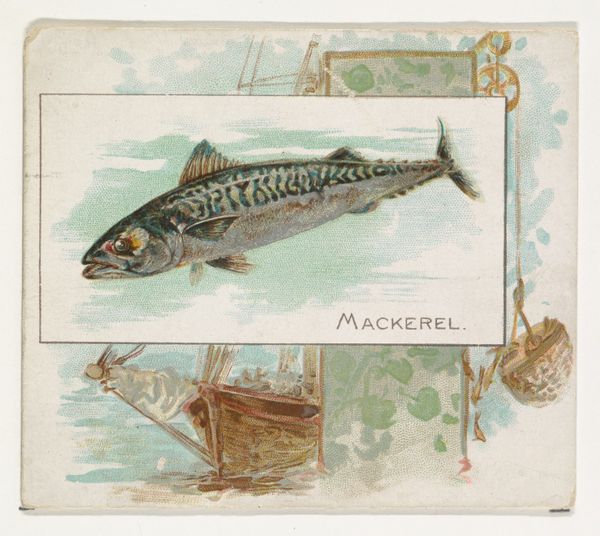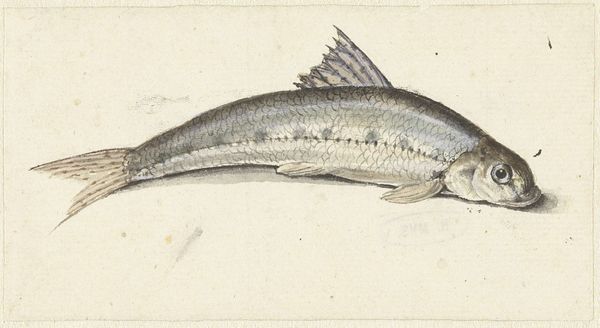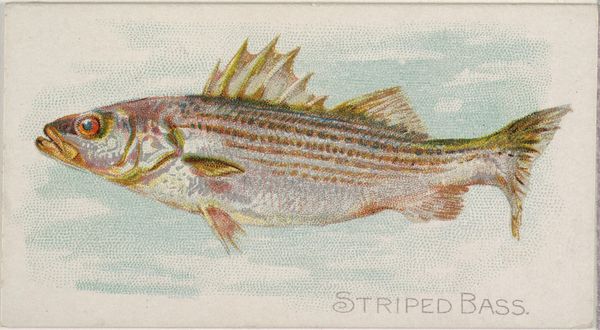
Mackerel, from the Fish from American Waters series (N8) for Allen & Ginter Cigarettes Brands 1889
0:00
0:00
#
fish
# print
#
coloured pencil
#
watercolour illustration
#
watercolor
Dimensions: Sheet: 1 1/2 x 2 3/4 in. (3.8 x 7 cm)
Copyright: Public Domain
Curator: Looking at this, I immediately sense a blend of serenity and potential energy. The composition is simple, a mackerel depicted against a very light, almost hazy blue background. Editor: Indeed. Let's delve into the context of this "Mackerel," part of the Fish from American Waters series by Allen & Ginter, dating back to 1889. These were trading cards included in cigarette packs. Curator: Ah, so everyday consumerism meets artistry. The company utilized what seems like a watercolor or perhaps colored pencil technique. These cards circulated widely, contributing to the visualization of the American landscape. The fish being, a symbolic form for sustenance. Editor: Absolutely, and observe how it reflects the aesthetic of Japonisme. The simplified form, the flattened perspective... all nods to Ukiyo-e prints that were captivating the Western art world then. This symbol of nature transformed into a widely spread consumer good. Curator: It is curious how the image transcends its immediate purpose. Note the cool silver and green shades – traditionally fish represents plenty. What thoughts about prosperity were provoked by this accessible art in ordinary individuals, especially the labor classes, can only be speculated upon today. Editor: The mackerel itself holds a multitude of interpretations. Given its watery domain, it becomes linked with ideas of the unconscious and our emotional depths. In ancient symbology, fish also signify transformation, an apt visual reminder emerging from packs of cigarettes. Curator: Its popular nature is fascinating, bringing art into spaces it wasn't originally present. What implications does this have for cultural access, art making, and how these are influenced by markets of consumer goods? It shows that a lot of art is connected to economics and class relations, Editor: The mass reproduction is very important here too. Something so widely accessible and disseminated shapes shared cultural understandings over time. I mean, images, symbols and archetypes can reinforce cultural memories. Curator: It makes you consider who the art was really made for at that time, beyond promoting cigarette sales, and whether an image in such mass quantities can be anything more than just advertising? Editor: I agree, reflecting upon that brings new appreciation to these illustrations; even advertising is an art that tells about its own present time. Thank you.
Comments
No comments
Be the first to comment and join the conversation on the ultimate creative platform.
